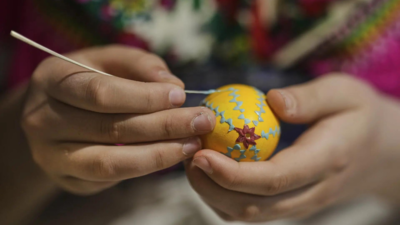The Cultural Ties of Korean Immigrant Families in America
Growing up in a Korean immigrant household, I have always been able to identify my mothers kimchi by taste alone. Furthermore, I could easily recognize the flavors of the kimchi made by my mother's friends, who frequently visited our childhood home, bringing with them an array of traditional Korean side dishes, known as banchan.
This sharing of food became so ingrained in my experience that the sound of a doorbell was synonymous with the arrival of delicious culinary gifts. My mother would often return the gesture, sending her own Tupperware brimming with pickled vegetables and seasoned roots back to our neighbors. This cycle of culinary exchange not only nourished our bodies but also reinforced community bonds.
My parents, who immigrated from Korea to the United States in the 1970s, were determined to ensure that my siblings and I maintained a connection to our rich cultural heritage, despite living so far from our homeland. Food was our primary link to our roots, acting as a bridge that connected us to our Korean culture.
In Korean communities, this practice of sharing side dishes is known as nanum munhwa, which translates to a culture of sharing. Preparing banchan is a labor-intensive process, often resulting in dishes with short shelf lives. Consequently, it makes practical sense to prepare these dishes in large quantities and share them with neighbors. My mother, having grown up on a farm in the Korean countryside, fondly remembers delivering her mothers homemade fare to friends and neighbors, a task she sometimes found daunting, particularly under the cover of night.
When my mother and her friends brought these traditions to America, they adapted their recipes to accommodate the availability of different ingredients. For instance, kimchi was often made with kohlrabi, and pickled radish wraps were creatively filled with roast beef instead of traditional meats. Additionally, the transportation of these beloved side dishes transitioned from walking through fields to driving in Volvo Station Wagons and Subaru Foresters.
However, these side dishes represented more than just culinary delights; they embodied a deep sense of community and kinship among a network of first-generation parents who had also emigrated from Korea. Many of these families remain integral to my upbringing, shaping not only my culinary tastes but also my social fabric.
My parents friends became more than casual acquaintancesthey took on the roles of surrogate aunts and uncles, while their children became my de facto cousins. Together, we celebrated every major holidayThanksgiving, Christmas, Mother's Day, and Father's Daycreating a familial network that extended far beyond blood relations. We frequently joined each other on day trips and extended vacations, while our clothes, games, and toys were shared, swapped, and passed down. As the youngest child, I always had the privilege of choosing from the best of what was available.
To this day, its challenging to encapsulate the significance of these relationships in a single term. Referring to them merely as friends feels inadequate, while labeling them family feels deceptive. Despite having actual relatives in Korea, the distance often renders those connections less immediate. Instead, it feels more fitting to embrace my local community as kin, as they collectively embody what it means to be Korean in America. In fact, I affectionately refer to my cousins with titles that translate to older sister or older brother.
Growing up as a child of immigrants has instilled in me a profound sense of gratitudea shared sentiment among many of my peers. We carry with us an appreciation for the sacrifices our parents made in order to provide us with opportunities abroad. Yet, as I reflect on this, I wonder what this experience will mean for the third generation of our families.
Today, a new generation is emerging, proudly represented by my niece, Sloane. My sisters and I often contemplate how our upbringing will influence hers. My parents live close by and are playing an active role in her development. Like many other children in our community, Sloane is being raised in a multicultural household that draws inspiration from both her parents and her grandparents.
In our ever-evolving multigenerational community, the commitment to preserving our Korean heritage remains steadfast. From language to food, Sloane and her peers are constantly surrounded by reminders of their cultural roots. Although many of the neighborhood children I grew up with have relocated across the nation, we make it a priority to emphasize that we are more than friends; we are family. While it's no longer possible to deliver fresh side dishes daily, when we do visit, we bring gifts and tokens of our new lives.
As we look to the future, we can only hope that the experiences of the third generation will be as enriching as ours, firmly shaped by our parents willingness to support one another in this new world.


















